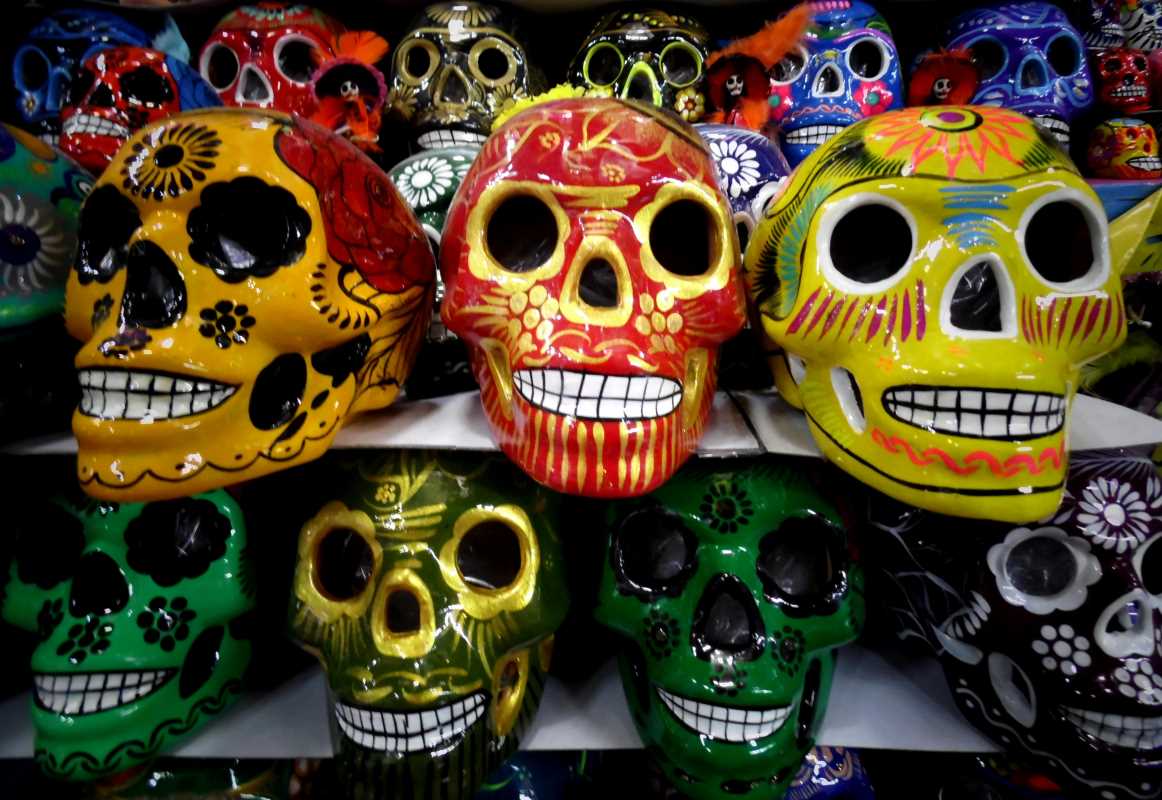Sugar skulls, or calaveras de azúcar, are more than just colorful confections; they are vibrant symbols of love, remembrance, and respect for the departed. Central to Día de los Muertos (Day of the Dead), a sacred Mexican tradition, sugar skulls honor those who have passed while celebrating the cyclical and joyful nature of life and death. And yet, despite their profound cultural significance, sugar skulls are frequently misunderstood – mischaracterized as Halloween decor or mere trinkets devoid of meaning. To grasp their true essence, we must explore their history, artistry, and symbolism in the context of Mexican heritage.
The Origins of Sugar Skulls
The tradition of sugar skulls has its roots in a confluence of indigenous and European influences. Long before the Spanish arrived in Mexico, the Aztecs held elaborate rituals to honor the dead, believing that death was not an end but part of a continuous cycle. During these ceremonies, skulls held a prominent role, symbolizing both the afterlife and the passage between worlds.
When Spanish colonizers introduced Catholic traditions, such as All Saints’ Day and All Souls’ Day, these fused with indigenous customs to create Día de los Muertos, a uniquely Mexican celebration of life and death. The sugar skull, made from a mixture of sugar, egg whites, and water, emerged as a joyful and accessible way to represent the departed. It drew on a Mexican legacy of crafting with food, as affordable materials like sugar allowed artisans to create decorative and edible tributes.
The Meaning Behind the Skulls
On the surface, sugar skulls are visually stunning creations, adorned with bright colors, intricate designs, and sometimes even glitter or foil. But beneath their whimsical appearance lies a web of cultural, spiritual, and artistic meaning.
Each sugar skull is crafted to represent an individual who has passed. Often, their name is written across the forehead, or the design reflects aspects of their personality. These colorful skulls are placed on altars, or ofrendas, which are elaborate offerings prepared during Día de los Muertos. Alongside flowers, photographs, and favorite foods, sugar skulls help create a space where the deceased are invited to visit the living for a brief reunion.
Far from being somber, the vivid colors and playful expressions of sugar skulls reflect an understanding of death that is deeply celebratory. Rather than mourning, Día de los Muertos acknowledges life’s impermanence and rejoices in the enduring bond between loved ones, living and dead. Sugar skulls symbolize this duality – a reminder to cherish life while honoring those we’ve lost.
Misconceptions About Sugar Skulls
Despite their rich history and significance, sugar skulls are often misconceived and misappropriated, particularly outside of Mexico. One of the most prevalent misunderstandings is their association with Halloween. While both Halloween and Día de los Muertos occur around the same time of year and feature skull imagery, the two celebrations are fundamentally different in purpose and tone.
Halloween, rooted in Celtic traditions like Samhain, focuses on the scary, dark, and eerie aspects of death. Día de los Muertos, on the other hand, is not about fear but about love and connection. Engaging with skull symbolism on this sacred occasion is an act of devotion, not an attempt to spook or provoke.
Another widespread misconception is that sugar skulls are merely decorative items. Sold in stores or depicted on clothing and accessories, they are often stripped of their cultural meaning, reduced to colorful novelties disconnected from their purpose. This commodification can contribute to cultural appropriation, particularly when sugar skull imagery is used without acknowledgment of its roots in Mexican heritage.
Perhaps the most notable problematic trend is the adoption of sugar skull makeup, often seen at Halloween parties. While the artistry of painted faces can be breathtaking, it is important to understand that this is not a casual costume. Among Mexicans, calavera makeup or masks are worn as a deeply symbolic act, part of paying homage to ancestors and participating in sacred traditions. Dressing as a sugar skull without grasping this meaning risks trivializing a practice loaded with spiritual significance.
The Artistic Craftsmanship of Sugar Skulls
Creating sugar skulls is an art form passed down through generations. Skilled artisans lavish care and technique on their designs, crafting each skull as a unique expression of creativity and reverence. The process begins with molds shaped into various skull sizes, from small to large. Once the sugar mixture sets, the blank skulls are decorated with royal icing, incorporating bold patterns, floral motifs, and shimmering embellishments.
While the basic ingredients are simple, the artistry involved elevates these skulls into stunning works of cultural expression. Some sugar skulls are enhanced with edible dyes, feathers, beads, or metallic foil, making them not just symbolic but also a visual feast for the eyes. Others may opt for non-edible ceramic or clay versions that can be displayed year after year, further emphasizing their enduring significance.
For artisans, the act of creating sugar skulls is itself a form of honoring the dead. Each swirl of icing, each stroke of color, embodies respect for those who have passed and love for the tradition that keeps their memory alive.
Bringing Awareness to Their True Meaning
To ensure sugar skulls are appreciated and not distorted, it’s important to promote awareness of their origins and cultural depth. Education plays a key role. By sharing the stories, rituals, and values surrounding Día de los Muertos, we can foster respect for its practices and protect against cultural misappropriation.
Celebrating sugar skulls authentically involves understanding their role in creating a connection between generations. It means viewing them not as abstract symbols or fashionable items, but as heartfelt components of a vibrant, living tradition. For those outside of Mexican culture, honoring sugar skulls might take the form of learning about their meaning, supporting artisans who keep the craft alive, or attending Día de los Muertos events with sensitivity and appreciation.
A Legacy of Love and Memory
Sugar skulls are far more than the colorful candies they appear to be. They embody the joys and sorrows of life and death, the deep bonds of familial love, and an enduring cultural legacy that celebrates community and connection across time. At their heart, sugar skulls represent a truth that transcends borders and traditions – that our memories of loved ones keep them alive, and that the warmth of remembrance outshines the chill of mortality.
While they may spark curiosity with their bright, cheerful designs, appreciating sugar skulls requires going beyond the surface. It involves recognizing their origins, respecting their cultural significance, and resisting the urge to reshape them into something they are not. By honoring the art and meaning of sugar skulls, we deepen our understanding of how culture gives life to memory, and memory gives life to love.
On Día de los Muertos, sugar skulls guide us to celebrate life, even as we remember death. They remind us that love endures beyond the confines of time and space, creating a legacy as vibrant and enduring as the sugar skulls themselves.
 (Image via
(Image via





